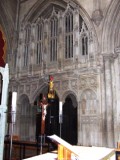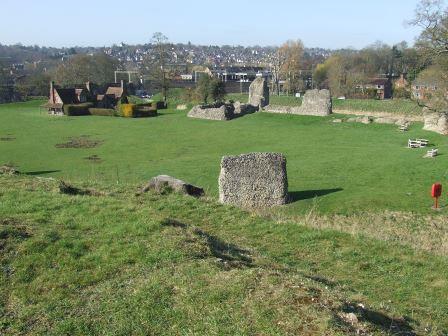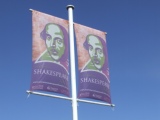Birth of Henry Plantagenet at Hatfield
Birth of Henry  Plantagenet at Hatfield on 10 February 1441. He was the eldest son of Richard Plantagenet, 3rd Duke of York, and Cecily Neville. He died as a baby.
Plantagenet at Hatfield on 10 February 1441. He was the eldest son of Richard Plantagenet, 3rd Duke of York, and Cecily Neville. He died as a baby.
At the time of his birth, his parents had already two daughters, Joan (1438), who had also died in infancy, and Anne (10 August 1439). Their next son, Edward, was born on 28 April 1442. He was to accede the throne as Edward IV on 4 March 1461.
Unfortunately it is not sure whether he was born at Hatfield in Hertfordshire or Hatfield Chase in Yorkshire. Hatfield in Hertfordshire belonged to the Bishops of Ely, which is why it also called Bishops Hatfield. Their manor might have offered suitable accommodation on the way to London. The Great North Road connecting London and York ran through Hatfield.
Hatfield Chase was a royal hunting ground and one of the Duke of York’s family residences. [1] There are several sources linking Henry to this Hatfield. [2]
References:
1. Michael K Jones, Bosworth 1485: Psychology of a Battle. Tempus, 2003, p.81
2. For instance: Jones, ibid.
S Whaley, The History and Antiquities of Thorne, with Some Account of the Drainage of Hatfield Chase (1829). p.24
Hatfield Town Council, ‘Parish History‘
You can find a list of the children of Richard, Duke of York, and Cecily Neville here.
Dorothea Preis
Tags: Hertfordshire, House of York
 Death of Humphrey, Duke of Gloucester, aged 56. He was the youngest son of Henry IV, brother of Henry V and Lord Protector to his young nephew Henry VI, who was only nine months when he succeeded his father. Humphrey is buried at St Albans Cathedral.
Death of Humphrey, Duke of Gloucester, aged 56. He was the youngest son of Henry IV, brother of Henry V and Lord Protector to his young nephew Henry VI, who was only nine months when he succeeded his father. Humphrey is buried at St Albans Cathedral.







